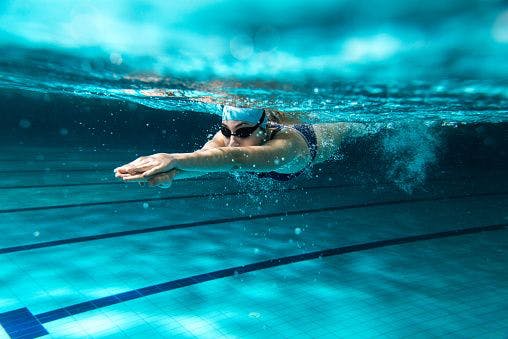Using fins helps you move through the water better and provide a better workout for your legs at the same time. That said, they can also bring misfortune to a swimmer in the form of fin blisters, which tend to happen when fin material rubs constantly against bare skin.
Preventative solutions, such as foregoing wearing fins and selecting the right swim fin socks, are just a few that we’ll discuss today to keep those blisters at bay.
How To Prevent Your Fins From Rubbing
In most cases, friction from the frequent rubbing of fin material and bare skin causes blisters. Thus, it makes sense that taking measures to prevent this action significantly reduces the risk of blister formation. Here are the ways to go about it:
1. Wear Regular Socks
What happened to swim fin socks? Well, in case you’re itching to break in those fins and don’t own a pair of neoprene socks yet, know that regular socks may do for the time being. However, try to avoid a pair that goes up to the knee, as that could contribute to drag and pose problems for other gear.
The ideal pair of regular socks for swimming should be those that sit right at the ankle or a little above it. Anything shorter, and the waves might cause them to slide off your feet easily.
When in a pinch, regular socks are better than nothing. They may not provide the best performance, but you can count on them to prevent blisters more often than not. That’s all that really matters in these scenarios.
Of course, you don’t want to make a habit of using cotton socks with fins. Their material tends to stretch out and lose shape over time. It causes the fabric to bunch and gather on certain areas of the feet. As you can imagine, this would result in the fin fitting too tight on those areas, which could lead to blister formation.
2. Use Fin Socks
Undoubtedly, investing in a pair of fin socks is the best way to prevent blister-causing rubbing. Keep in mind that fin socks are not created equal. Considering your preferences, some may perform better than others.
Neoprene fin socks are top-of-the-line in terms of protection and performance. They’re made from neoprene fabric, specifically two to three millimeters of it. The fabric is quite thick, so it really keeps the skin from rubbing on the fin directly.
These socks are so effective that you can even wear them over existing blisters without much trouble. Some awesome brands based on user reviews are Sporti and Dakine, so consider trying them out. Note that even in good brands, neoprene may fit a bit too tight and feel hot.
3. Use Medical Tape
If you’re wearing regular socks or using fin socks that don’t fit that well, a medical tape could be in order to prevent rubbing. Though, you can wear the tape without either of these socks, too.
Like regular socks, you should only look to use medical tape in the absence of swim fin socks. At best, they may only prevent blisters for short swims and are prone to getting washed out to sea.
When putting medical tape on, make sure your feet are dry. While that still wouldn’t be an assurance for keeping them on the entire length of a short or long kick set, it does help the tape stick better. If your feet are wet, you may as well forego the item entirely. Even if you dry your feet off thoroughly before wrapping, there’s a good chance that tape won’t adhere well.
Another downside of the medical tape is that it could take quite some time to wrap correctly. Remember, you are wrapping blister-prone areas in both your feet. Furthermore, you may need to secure several rolls of tape if you’re using fins the entire day.
Then, there’s the issue of the tape’s lack of efficacy. No matter how correctly you wrap it around your feet, there still won’t be a guarantee that blisters won’t form. This is mostly due to the tape’s thinness, which causes layers to bunch up, roll together, and rub more tightly on the skin.
Your Fins Could Be the Problem, Too!
Even with snug-fitting neoprene socks, a blister may still form here or there. A good solution to this is to divert your attention to the fins instead. You could be using your stellar fin socks with a less-than-stellar pair of fins.
Old and worn-out fins can cause blisters, whether or not you use them with top-notch neoprenes. They have bent and torn away over time, causing their wearers constant discomfort. What’s worse is that fin tears tend to form adjacent to blister-prone areas of the skin, so the painful formations are only inevitable.
Except, of course, when you replace your old fins with new ones! Make sure to choose a pair that fits perfectly, space allowance for neoprenes considered.



Comments are closed.